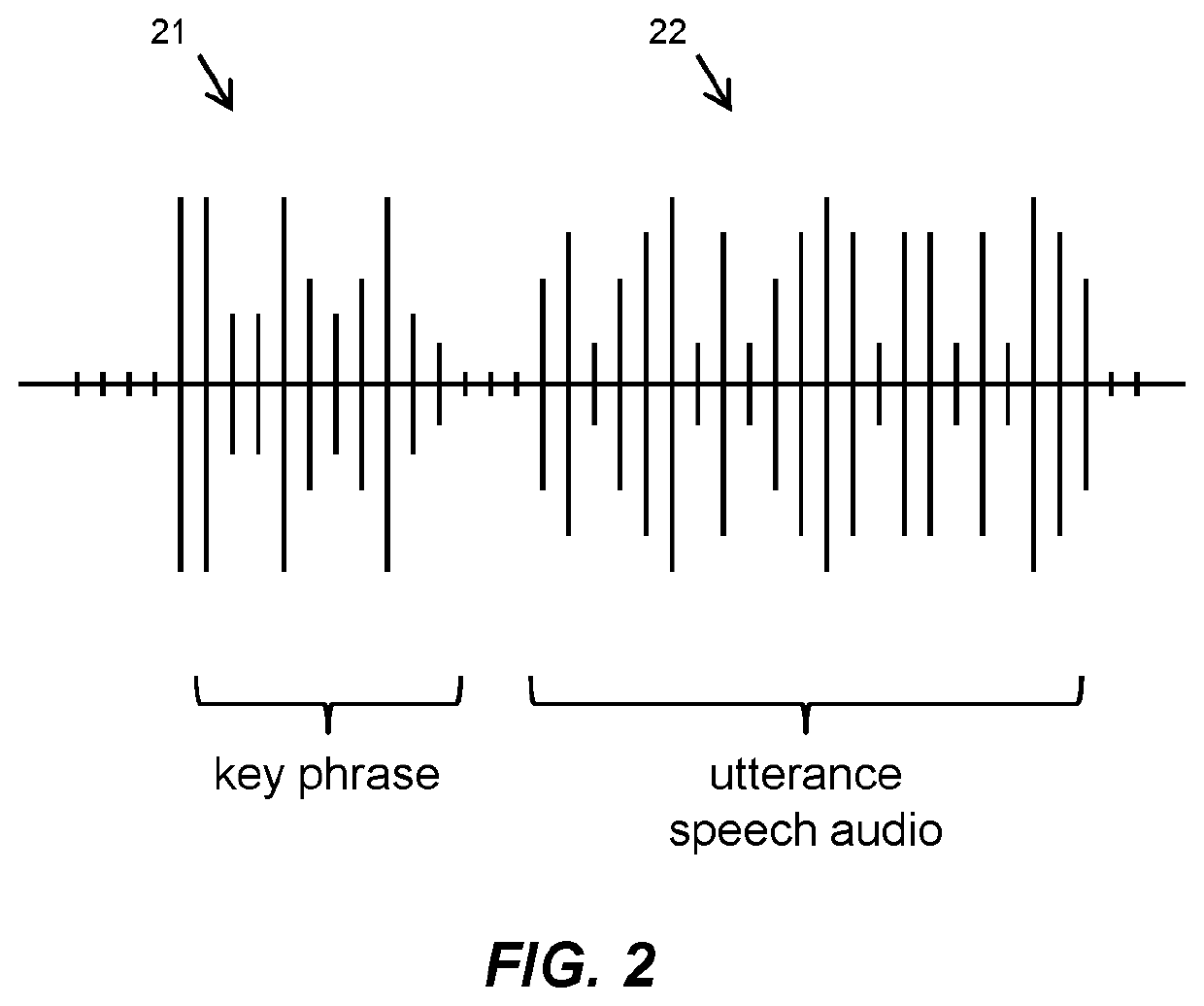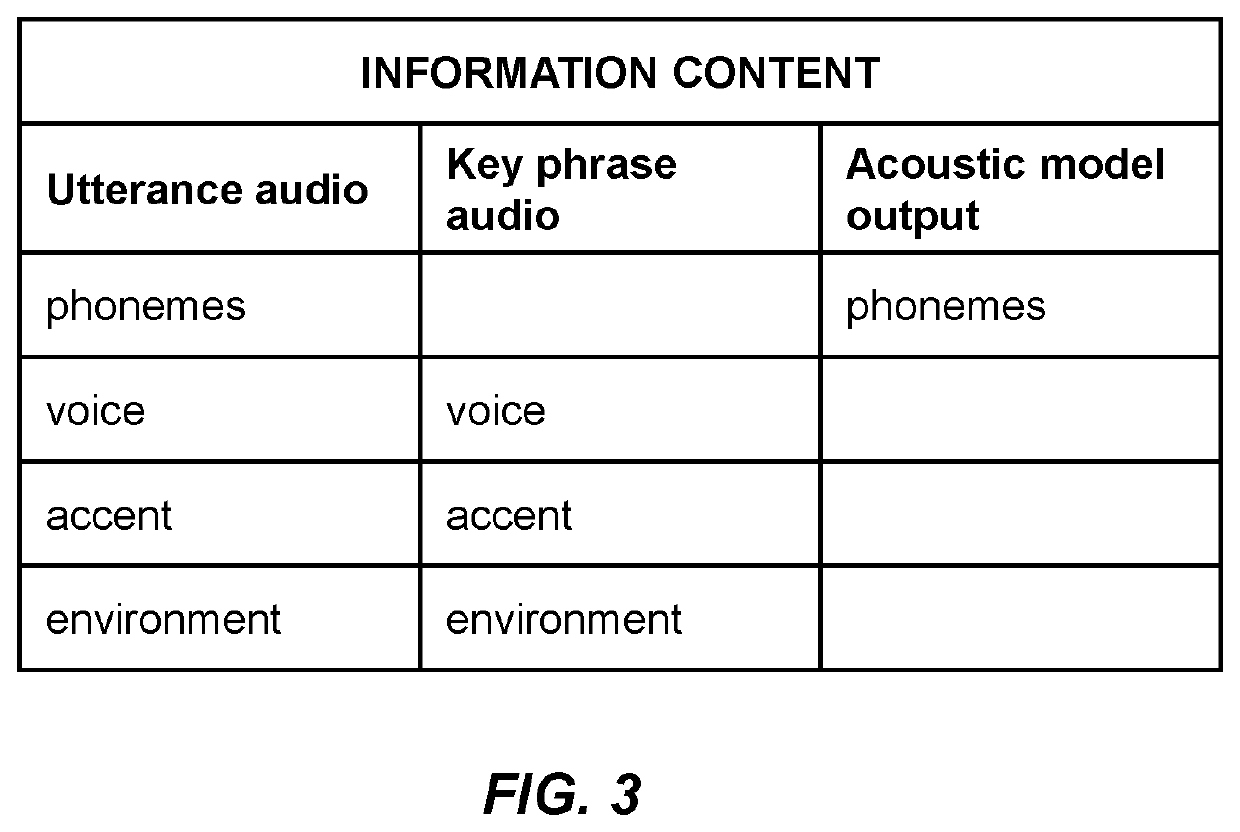Method and system for acoustic model conditioning on non-phoneme information features
a technology of acoustic model and information feature, applied in the field of automatic speech recognition, can solve the problems of limited speech recognition accuracy, dangerous speech recognition errors, bottlenecks of natural language speech processing, etc., and achieve the effect of improving the accuracy of automatic speech recognition and simple and powerful
- Summary
- Abstract
- Description
- Claims
- Application Information
AI Technical Summary
Benefits of technology
Problems solved by technology
Method used
Image
Examples
Embodiment Construction
[0036]The following text describes various design choices for relevant aspects of conditional acoustic models. Except where noted, design choices for different aspects are independent of each other and work together in any combination.
[0037]Acoustic models for ASR take inputs comprising segments of speech audio and produce outputs of an inferred probability of one or more phonemes. Some models may infer senone probabilities, which are a type of phoneme probability. In some applications, the output of an acoustic model is a SoftMax set of probabilities across a set of recognizable phonemes or senones.
[0038]Some ASR applications run the acoustic model on spectral components computed from frames of audio. The spectral components are, for example, Mel-frequency Cepstral Coefficients (MFCC) computed on a window of 25 milliseconds of audio samples. The acoustic model inference may be repeated at intervals of every 10 milliseconds, for example. Other audio processing procedures, e.g., Shor...
PUM
 Login to View More
Login to View More Abstract
Description
Claims
Application Information
 Login to View More
Login to View More - R&D
- Intellectual Property
- Life Sciences
- Materials
- Tech Scout
- Unparalleled Data Quality
- Higher Quality Content
- 60% Fewer Hallucinations
Browse by: Latest US Patents, China's latest patents, Technical Efficacy Thesaurus, Application Domain, Technology Topic, Popular Technical Reports.
© 2025 PatSnap. All rights reserved.Legal|Privacy policy|Modern Slavery Act Transparency Statement|Sitemap|About US| Contact US: help@patsnap.com



